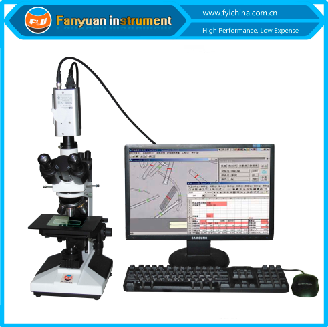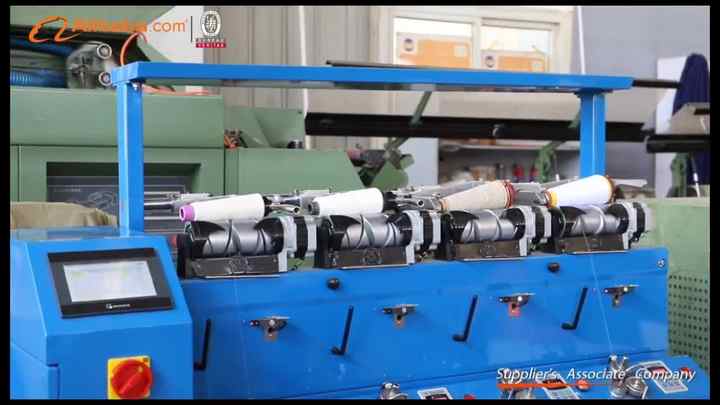Key Factors When Choosing an Optical Fibre Diameter Analyser
Key Factors When Choosing an Optical Fibre Diameter Analyser
Blog Article
Unlock Precision: The Ultimate Overview to Optical Fiber Size Analyser Tools
Precise dimension of optical fibre diameter is necessary for boosting the performance and integrity of fiber optic systems. As we examine these devices, it becomes evident that the future of optical fibre analysis is progressing swiftly, raising questions about just how these innovations will certainly affect the industry.
Significance of Optical Fiber Dimension
Properly determining optical fiber diameter is important in ensuring optimum efficiency and dependability in communication systems. The diameter of optical fibers straight impacts their light transmission abilities, impacting transmission capacity, depletion, and total signal stability. An exact dimension is vital to keep the preferred specifications for different applications, including telecommunications, information transmission, and noticing innovations.
Inconsistent or incorrect fibre sizes can result in boosted losses and reduced performance, ultimately endangering the efficiency of the whole communication network. Additionally, variations in diameter can trigger troubles in splicing and linking fibres, resulting in greater operational prices and potential system failings. Therefore, applying strenuous measurement procedures is crucial.

Types of Size Analyser Tools
To accomplish trustworthy optical fiber dimensions, different size analyser tools are used, each made to deal with details dimension needs and applications (optical fibre diameter analyser). These tools can be generally categorized into 3 main kinds: handbook, semi-automated, and totally automated analyzers
Hands-on size analyzers are normally used in smaller operations or labs where precision is needed but production quantity is low. They provide operators straight control over the dimension process, allowing for cautious modifications and confirmations.
Semi-automated size analyzers boost effectiveness by combining manual input with automated functions. These tools commonly include easy to use user interfaces that simplify the dimension process while still permitting operator oversight.
Completely automated size analyzers stand for the pinnacle of measurement modern technology. These sophisticated systems integrate innovative sensors and software to give real-time dimensions with very little user treatment. They are excellent for high-volume manufacturing environments, making sure regular accuracy and fast data collection.
Each kind of size analyser offers unique functional requirements, making it vital for customers to thoroughly review their specific demands when picking the appropriate tool for optical fiber dimension.
Key Features to Consider
When choosing an optical fibre diameter analyser, numerous crucial attributes necessitate careful consideration to guarantee optimal efficiency and integrity. First, dimension precision is critical; look for tools that offer high-resolution readings, preferably in micrometers, to guarantee accuracy in diameter assessment. Additionally, click over here the speed of dimension is essential, especially in production settings where effectiveness is necessary.
An additional crucial feature is the calibration process, as a trustworthy analyser needs to offer straightforward calibration treatments to preserve dimension integrity over time. The variety of sizes the tool can gauge is additionally substantial; ensure that it suits the particular fiber types pertinent to your applications.
Mobility may be a factor to consider, especially for fieldwork; small and lightweight designs improve usability in various settings. Furthermore, straightforward interfaces and software application compatibility can assist in smoother procedure and visit this web-site data analysis.
Last but not least, take into consideration the assistance and warranty supplied by the supplier; reliable customer care and detailed service warranty options can secure your financial investment and guarantee long-lasting satisfaction. By concentrating on these functions, you can pick an optical fibre size analyser that satisfies your details needs and boosts your functional abilities.
Ideal Practices for Usage
Efficient use of optical fibre size analysers pivots on a complete understanding of ideal techniques that improve dimension integrity and accuracy. Make certain that the analyser is calibrated correctly prior to each usage. Calibration versus recognized standards mitigates potential mistakes and establishes a baseline for subsequent measurements.
2nd, keep a tidy setting. Dirt, moisture, or pollutants on the analyser or the fibre's lenses can alter outcomes. Routinely inspect and clean both the fiber and the devices to keep optimum efficiency.

Additionally, perform dimensions at constant temperature levels and humidity levels, as environmental factors can impact outcomes. Document each measurement carefully, noting problems and any anomalies encountered during the process.
Future Trends in Optical Fiber Evaluation
As the need for high-performance optical fibres remains to increase, advancements in evaluation techniques are set to transform the industry (optical fibre diameter analyser). Future fads in optical fiber analysis will likely be driven by enhanced automation and the assimilation of expert system (AI) and artificial intelligence (ML) innovations. These advancements guarantee to boost data accuracy, lower analysis time, visit this site and allow real-time surveillance of fibre quality
In addition, the growth of straightforward and mobile evaluation tools will promote on-site assessments, permitting greater adaptability and efficiency in manufacturing settings. Improved imaging innovations, such as high-resolution imaging and spooky analysis, are expected to offer deeper understandings into fibre characteristics, enabling manufacturers to maximize their processes even more.
In addition, as industries increasingly accept sustainability, there will be a press for green materials and techniques in optical fibre production. This change will necessitate new analytical approaches to analyze the performance and long life of these materials under varying conditions.
Verdict
Accurate dimension of optical fiber diameter is important for maximizing performance and making sure reliability in interaction systems. Continued advancement will certainly additionally improve the accuracy and performance of optical fibre analysis.
Precise measurement of optical fibre diameter is important for enhancing the efficiency and integrity of fibre optic systems. In a significantly linked world, where high-speed information transmission is paramount, the function of accurate optical fiber diameter measurement can not be overemphasized, as it serves as the foundation for durable interaction infrastructure.When choosing an optical fibre size analyser, a number of vital features warrant careful consideration to make certain optimum performance and dependability.Effective use of optical fiber diameter analysers pivots on a detailed understanding of ideal practices that boost dimension integrity and precision.Precise dimension of optical fibre size is important for enhancing efficiency and making certain integrity in interaction systems.
Report this page